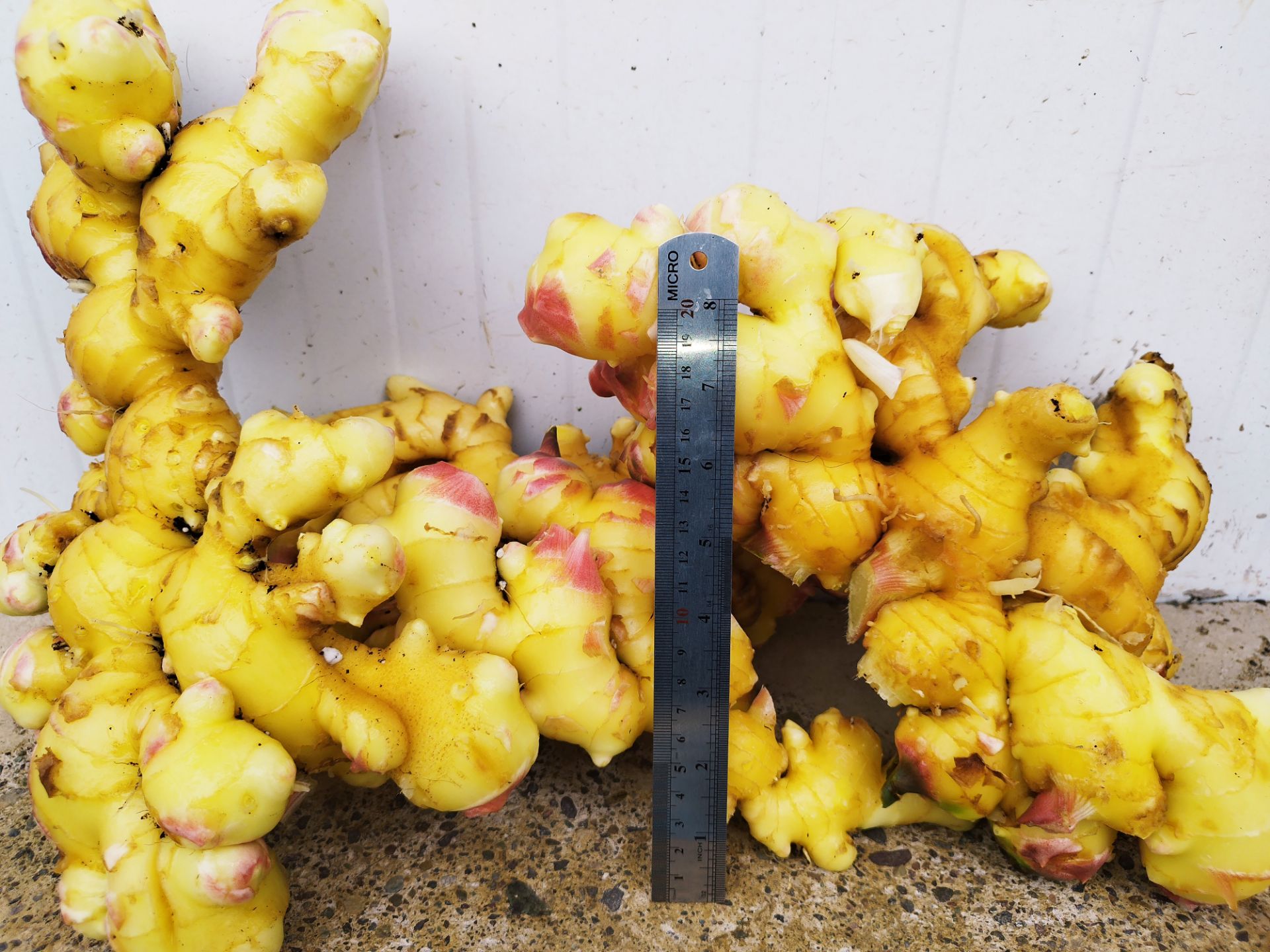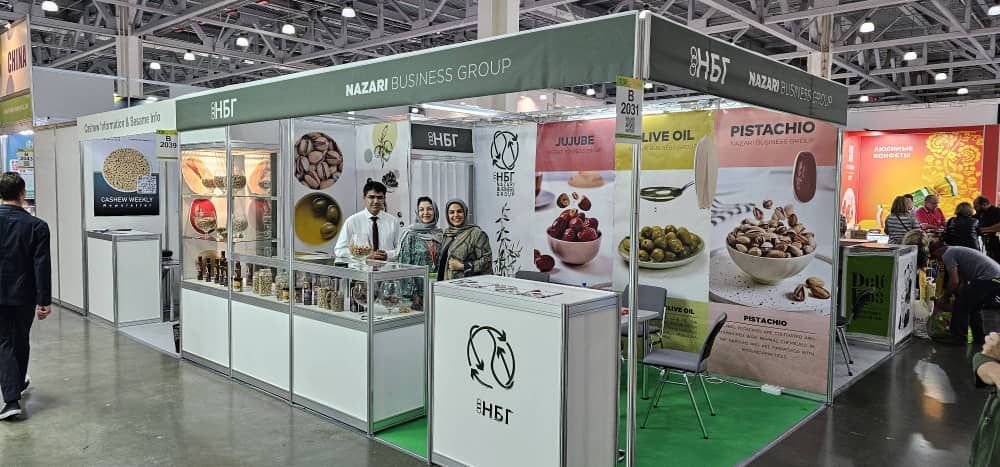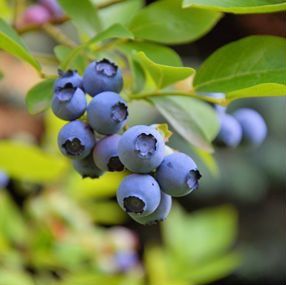,Commencement of Blueberry Harvest at Barizan Barzan Company in the Halal Abad Unit
:Different blueberry cultivars in the nazari business group include
The "Jewel" cultivar is among the popular varieties in California and central regions of Florida. It is characterized by its good and rapid growth, producing large fruits. This plant bears fruit within 3 to 4 weeks and is considered an early blueberry variety, with harvesting season in the months of July and early August
.This cultivar thrives well with an acidic substrate and good drainage in cool temperatures and warm areas, with a growth temperature range between 7 to 32 degrees Celsius
Due to its rapid growth, it is not recommended to cultivate Jewel in pots, and if planted, it requires large pots and special care. For cultivation in warm regions, shade is necessary, and it exhibits a moderate resistance to drought, although drought can significantly reduce its yield. Adequate moisture supply leads to increased productivity
The "Emerald" cultivar is among the highly productive varieties in the southern regions of America. It exhibits relatively good growth, and its fruits are classified as large-sized fruits
This cultivar belongs to the semi-evergreen category, with multiple harvests throughout the year. The main harvest period is in the months of July and the first decade of September. Its flowering period is very rapid, and it is susceptible to damage in regions with early spring frosts. Therefore, it is not recommended for areas with early spring frosts. The Emerald variety is suitable for cultivation in most regions with a mild and warm climate, but in warmer areas, it requires the use of shade structures
The "Biloxi" cultivar is renowned for its rapid bush growth and the production of fruits with a very good aroma and flavor. The yield of Biloxi is significantly reduced in regions with more than 150 hours of temperatures below 7 degrees Celsius. Therefore, it is recommended for areas without winter frosts
This cultivar is an early variety, and its fruits are harvested in late spring and early summer. The fruit is classified as medium to small-sized. It is a self-pollinating variety, but for the formation of larger fruits, cross-pollination is preferable. This plant requires full sunlight and proper nutrition for suitable growth and development
The "Sunshine" cultivar is suitable for cultivation in the backyard phase in the western regions of America from Santiago to Seattle. Its fruits are classified as medium-sized fruits. It is one of the early varieties with high productivity, and its fruits have a delightful taste. It is considered a semi-dwarf variety and highly resistant to cold, making it more recommended for warmer regions. It is considered an early-producing cultivar in terms of fruit maturity and harvesting
This cultivar is particularly recommended for cultivation in South American regions with warm winters. The temperature range for its growth is between 8 to 33 degrees Celsius. If the soil temperature goes below 2 degrees Celsius, the root structure may suffer severe damage. It requires a certain amount of chilling hours for increased productivity, between 100 to 150 hours of temperatures below 7 degrees Celsius
Being a semi-dwarf variety, it is suitable for container planting, and larger pots are recommended. Its nutritional needs are not significantly high like other blueberry cultivars, but proper feeding enhances its vegetative growth and yield. Additionally, it requires full sunlight, and in regions with intense sunlight, the use of shade structures is advisable
The "Patriot" cultivar is one of the excellent choices for home and garden production. Patriot is known for its very low growth habit. It falls into the category of early to medium-ripening cultivars. Its fruits are classified as large-sized and have a good taste. Fruit formation in this cultivar occurs in July, and its flavor is sweet. It is a self-pollinating variety, but for larger fruit production, cross-pollination is effective. Additionally, planting this cultivar alongside other blueberry varieties can increase both the quantity and quality of the fruits
Patriot is considered cold-resistant and requires 1000 chilling hours below 7 degrees Celsius for bud formation and fruit setting. The temperature range for its growth is between 7 to 30 degrees Celsius
Similar to other blueberry varieties, it requires an acidic pH for growth and exhibits greater resistance to high soil moisture among other blueberry cultivars. Its root can also tolerate temperatures between 1 to 2 degrees Celsius
Due to its compact and low growth habit, Patriot is highly suitable for container planting. Therefore, larger pots are necessary for container cultivation. Its nutritional needs are not significantly high, similar to other blueberry varieties, and proper feeding enhances its vegetative growth and yield
The "Darrow" cultivar has one of the largest fruit sizes among other blueberry varieties. Its fruit has a light blue color and a very good taste. It is considered a late-ripening cultivar, and its fruit matures in the months of August and early September
The flowers of this cultivar are pinkish-white, and it is a self-pollinating variety. However, cross-pollination using another pollinator can increase both the quantity and quality of the fruits. Darrow has a long growing season and requires more than 1000 chilling hours. It thrives in northern regions of America, but high temperatures can impact its performance. Therefore, for cultivation in warmer areas, temperature reduction through the use of shade structures is necessary
Like other blueberry varieties, Darrow requires an acidic pH for growth, and among blueberry cultivars, it exhibits greater resistance to high soil moisture. Its root can tolerate temperatures between 1 to 2 degrees Celsius
Due to its compact and low growth habit, Darrow is highly suitable for container planting. Therefore, larger pots are necessary for container cultivation. Its nutritional needs are not significantly high, similar to other blueberry varieties, and proper feeding enhances its vegetative growth and yield
The "Duke" cultivar is one of the earliest blueberry varieties cultivated in northern regions. Its fruits are classified as large-sized and uniform in size. While it may not have the best taste compared to other varieties, its flavor improves during storage and cold preservation. Duke is considered suitable for mechanical harvesting. Its fruits are used both fresh and for processing. The fruit has a firm texture and has a longer post-harvest shelf life compared to other cultivars
It has a high chilling requirement, making it recommended for cultivation in regions with high winter chill hours. Like other blueberry varieties, Duke requires an acidic pH for growth, and among blueberry cultivars, it exhibits greater resistance to high soil moisture. Its root can tolerate temperatures down to freezing (0 degrees Celsius)
Due to its compact and limited growth habit, Duke is highly suitable for container planting. Therefore, larger pots are necessary for container cultivation. In container cultivation, it is essential to protect the roots from winter cold, so placing them in a controlled temperature environment is advisable. Its nutritional needs are not significantly high, similar to other blueberry varieties, and proper feeding enhances its vegetative growth and yield
The "Bluegold" cultivar is a medium-to-late ripening blueberry variety known for its cold hardiness, specifically suitable for northern regions of America. Its fruits are classified as medium to large-sized. Bluegold is well-suited for both hand and mechanical harvesting, and it finds applications in fresh consumption as well as processing. It falls into the category of medium-to-late ripening cultivars, making it a good choice for mechanical harvesting. Typically, the fruit is harvested in the month of September
It is recommended for cultivation in cool regions, and its temperature range for growth is between 7 to 30 degrees Celsius. The root of Bluegold is susceptible to damage at temperatures below freezing (0 degrees Celsius). It requires a significant chilling period for higher yields, ranging from 800 to 1000 hours of temperatures below 7 degrees Celsius
Like other blueberry varieties, Bluegold thrives in acidic soil (low pH) and exhibits greater resistance to high soil moisture compared to other blueberry cultivars. The root can tolerate temperatures down to freezing (0 degrees Celsius)
Due to its growth height of 160 to 2 meters, it is not recommended for container planting, but if grown in a pot, special care and considerations are needed. Its nutritional requirements are not significantly high, similar to other blueberry varieties, and proper feeding enhances its vegetative growth and yield
The "Bluecrop" cultivar is a mid-season blueberry variety highly resistant to cold temperatures. Its fruits are classified as large-sized. Bluecrop is known for its high yield and excellent resistance to diseases, making it one of the most popular blueberry cultivars in America. It is mostly recommended for cold regions. Regarding the timing of fruit ripening and harvesting, it falls into the category of mid-season ripening
It is well-suited for cultivation in cool regions, and its temperature range for growth is between 7 to 30 degrees Celsius. The root of Bluecrop is susceptible to damage at temperatures below freezing (0 degrees Celsius). It requires a significant chilling period for higher yields, ranging from 800 to 1000 hours of temperatures below 7 degrees Celsius
Like other blueberry varieties, Bluecrop thrives in acidic soil (low pH) and exhibits greater resistance to high soil moisture compared to other blueberry cultivars. The root can tolerate temperatures down to freezing (0 degrees Celsius)
Due to its growth height of 160 to 200 centimeters, it is not recommended for container planting. However, if grown in a pot, large containers with special care and attention are required. Its nutritional requirements are not significantly high, similar to other blueberry varieties, and proper feeding enhances its vegetative growth and yield. It also requires full sunlight for growth and is suitable for regions with high light intensity, for which the use of shade netting is recommended
Brigitta is a late-maturing blueberry variety. Its fruit is classified as medium to large in size and is suitable for both hand and mechanical harvesting. It is used for fresh consumption as well as processing. The fruit has good storage qualities due to its firm texture, making it an excellent choice for mechanical harvesting. It is highly resistant to cold and freezing temperatures, making it well-suited for processing purposes
This variety is recommended for cultivation in a wide range of regions, but in warmer areas, using shade netting or similar methods to provide a cooler environment can improve growth and yield. The ideal temperature range for its growth is between 7 to 30 degrees Celsius, and if the soil temperature drops below freezing, the root tissue can be damaged. It requires a chilling period of 500 to 800 hours below 7 degrees Celsius to produce higher yields
Like other blueberry varieties, Brigitta prefers acidic soil with a low pH for optimal growth and is more resistant to high soil moisture. Its roots can tolerate temperatures below freezing. With a height ranging from one to two meters, it is not recommended for pot cultivation unless using large pots and providing special care. Its nutrient requirements are not particularly high, and providing appropriate nutrition will promote vegetative growth and fruit yield
Chandler is a medium to late-maturing blueberry variety and is known for having some of the largest fruits compared to other varieties. The fruit has a delicious taste and is commonly used for fresh consumption
It is recommended for cultivation in most cold regions, but it can also be grown in warmer areas using shade netting or similar methods. The ideal temperature range for its growth is between 7 to 29 degrees Celsius, and if the soil temperature drops below one degree Celsius, the root tissue can be severely damaged. It requires a chilling period of more than 1000 hours to achieve higher yields
Similar to other blueberry varieties, Chandler requires acidic soil with a low pH for optimal growth and exhibits greater resistance to high soil moisture. Its roots can tolerate temperatures down to freezing
With a height ranging from one to two meters, it is not suitable for pot cultivation unless using large pots and providing special care. Its nutrient requirements are not particularly high, and providing appropriate nutrition will promote vegetative growth and fruit yield
To purchase blueberry products from Barizan Barzen Agricultural Group, please visit the Dotchin website at




